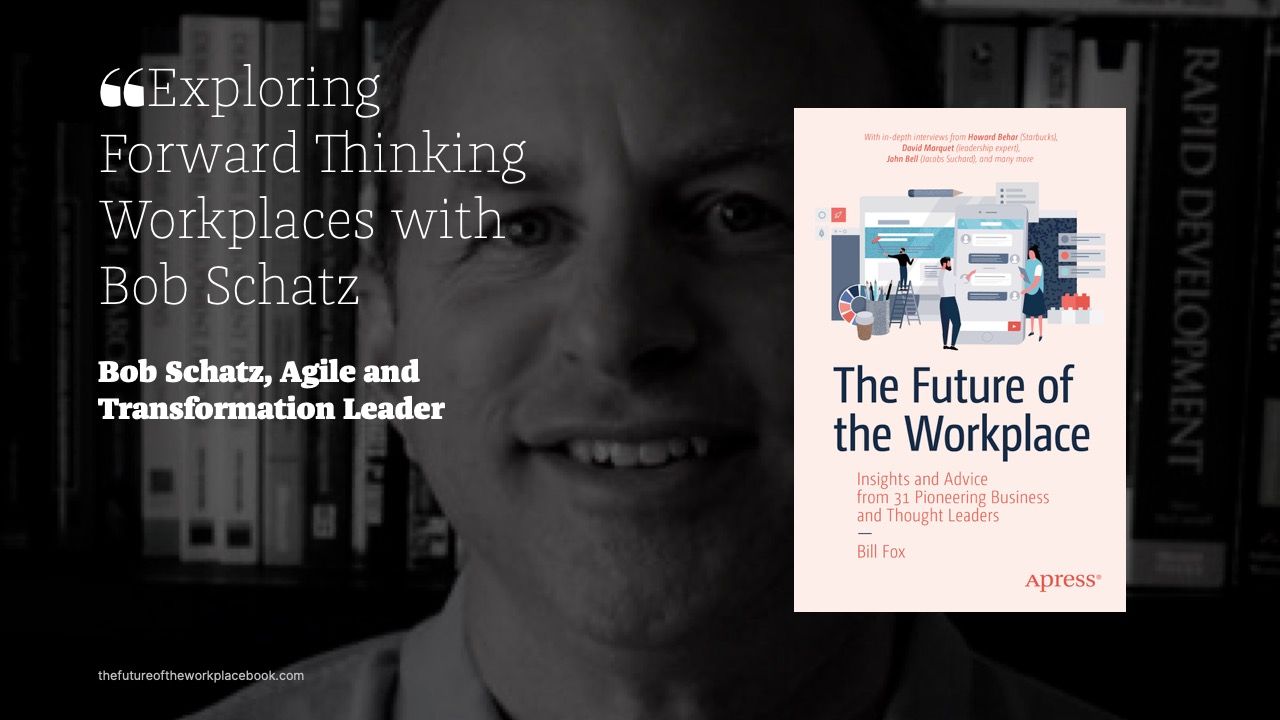Exploring Forward-Thinking Workplaces with Bob Schatz
Getting people into an interesting problem-solving situation where they are challenged with some type of scarcity and they have to work as a team is what brings out the full capacity of people.

Bob Schatz: Agile and transformation leader at Agile Infusion, LLC.
At Forward Thinking Workplaces, we are discovering the people, insights, and strategies that lead to Forward Thinking minds, leaders, and workplaces of the future — today!
How can we create workplaces where every voice matters, everyone thrives and finds meaning, and change and innovation happen naturally?
Bob Schatz: This is a great question. I’ve always been someone that really wants to create a workplace described in those words. As a leader, I know that I’ve tried to create that type of environment for people in my career. As a consultant, I go from company to company and see what they’re doing, and I try to help them get to a better place where continuous improvement is the daily goal. In my heart, I want to believe something, like you’re describing here, can happen, but then I think about it and see what the reality is.
What we can do as leaders is put people that want that type of workplace into an environment that fosters that kind of culture.
I don’t think this type of workplace will emerge in most organizations. It takes a lot of work, excellent leadership, and special culture, all being in alignment at the same time. We can do as leaders are put people who want that type of workplace into an environment that fosters that kind of culture. But I also think some people might not want that—or it may not fit every situation. Some people want to show up. They want to do good work. They want to know that the work has some meaning to it, but they may not feel the need to own the process. There are some types of work that fit well with these people. I don’t think everybody needs to be a hard-charging change agent and an innovator, and if there are too many, is that a good thing?
I also think that some people at different levels of the organization—all the way from the top to the bottom—might not have that gear. They don’t have that gear to get to where they can do this. It doesn’t really match every type of situation. I’m thinking in highly structured operational environments where the work is more standardized and procedures must be followed. It’s just about getting things done.
In John Kotter’s latest book, XLR8, he writes about organizations developing a dual operating system. One operating system is for the “keep the lights on” type of work and execute the steady-state business. The other operating system is for innovating new products and services, which requires a whole different culture. Many companies are trying to build in these dual operating systems that have a connection—one feeds the other, but it’s tough to do with companies having today’s pressures. It’s becoming more and more a need but trying to figure out how to make it happen is fully different.
Note: This is a preview of the full interview. The complete interview was selected by Apress for publication and continues in The Future of the Workplace.
